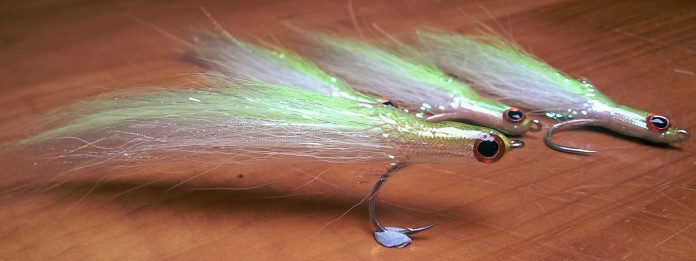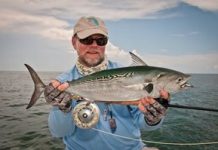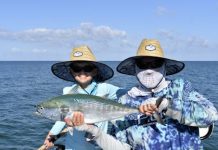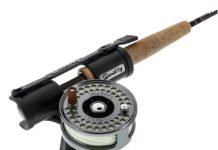 Capt. Fred Everson is a well known and talented fishing guide who operates out of the productive Lower Tampa Bay Area. He’s also a well know outdoor write and author of many books. In this article, Capt Fred talks about Fly-casting, an artistic form of fishing. In the hands of an expert, a well made cast is a thing of beauty and grace.
Capt. Fred Everson is a well known and talented fishing guide who operates out of the productive Lower Tampa Bay Area. He’s also a well know outdoor write and author of many books. In this article, Capt Fred talks about Fly-casting, an artistic form of fishing. In the hands of an expert, a well made cast is a thing of beauty and grace.
Fly-fishing is ancient sport, with the first written record of it appearing around 300 a.d. Bamboo fly rods made of split cane are still manufactured and enjoyed by a dedicated group of traditionalists, but today’s technology provides superior fly rods made with graphite fibers. It took a over a hundred years to replace bamboo as the ideas fly rod medium, but it’s a done deal. Anything cane rods can do, graphite rods will do better. Modern fiberglass fly rods never matched the stiffness of bamboo, but graphite rods could, and at a fraction of the weight. Cane rods were suddenly obsolete; graphite revolutionized fly-fishing. The lighter fly rod made the transition from freshwater to saltwater more practical and sturdy machined aluminum reels made fly-fishing for giant pelagics such as marlin possible.
Saltwater flyfishing is currently the fastest growing area in recreational sport fishing. Anglers are ever looking for new challenges, and many fish found on the flats are perfect targets for the fly fisher. Salt water fly fishing is a natural direction for an angler to take after he has graduated from live bait to artificials, and mastered the latter on spinning or baitcasting tackle. But most fly fishermen will concede the fly rod is not an everyday tool on saltwater. It’s something to use when the fish are really biting, or something to fish with on hand picked days when the weather is perfect, and tides and moon phase make good fishing likely.
Fly-casting is an artistic form of fishing, as anyone who saw the film “A River Runs Through It” would attest. In the hands of an expert, a well made cast is a thing of beauty and grace.
The angler is casting a fly line that is matched to the rod, and novices find keeping the line airborne difficult. Learning to flycast is easier with a coach who can see what you are doing wrong and tell you how to fix it. Attending seminars is helpful, and so are videos, but there is nothing quite like a coach to learn the intricacies of throwing a fly.
Fish suited to fly-fishing for novices would include ladyfish and jack crevalle. These fish try to eat anything small that moves, and are not deterred by clunky, misplaced casts. Keep the fly moving, and these fish will hit it.
With a handle on casting basics, knot tying, and leaders, you can move onto the flats for bigger and badder fish – redfish, snook and speckled trout. Ever aggressive trout are easiest to catch with a fly.
handling a weight forward line and at least a hundred yards of backing is a good place to start. You can probably buy everything you need for less than two hundred dollars new. Like exercise equipment, there is lots of used fly fishing tackle out there belonging to anglers who found fly casting to be a lot like work.
Capt. Fred Everson
P O Box 3261
Apollo Beach FL 33572
(813) 645-9424
- VIDEO – Dolphin eats snook and has fun doing it. - February 13, 2016
- Fly Fishing Ideas – Time to fly - September 16, 2011











